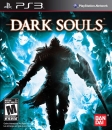VGPolyglot said:
RingoGaSuki said:
I'd highly recommend KanjiDamage (link in the first post), breaks down the Kanji into their radicals and makes them like an alphabet and so very easy to remember. Does it all humorously too, so that's even better! :)
|
I also must add that learning the stroke oreder is essential. It makes memorizing easier and teaches the proper way to draw a character.
|
If you (or anyone) can think about someone that had a significant boost to reach fluency by learning stroke order (except for natives), I'd be interested. If not... with due respect, I'd go as far as to say it's bullshit.
I spent quite a long time studying japanese, I've been working in Japan for 4 years, and I think the most difficult thing in japanese is the massive amount of vocabulary (1), the difficulty to remember it (2), and the fact that most of the meaning is conveyed by it (3).
(1) An English native graduate knows 20.000 words of English, a native Japanese graduate knows 40.000 Japanese words. Twice as much is really a lot more (it's certainly not a linear difficulty), but I think the difference is even bigger for the basic (everyday) vocabulary.
(2) a - 22 phonemes versus 36 in English, 37 in French, so a massive amount of words sounds like each other. b - at least 2000 kanji versus 26 caracters. c - no passive vocabulary or basic understanding the way you have from a latin language to another, or from anything to English.
(3) A very simple grammar, a lot of sentences without subject, or (significant) verbs. And the tacit understanding (以心伝心). Every word count.
I think I got a very basic understanding of Japanese after 2000 words, a level good enough to start working, make me understood in basic conversations after 8000 words, and currently some kind of fluency with 18.000 words (if I read a book there is a word I don't know every 2 pages, it happens - rarely - I don't know how to say something). 18.000 words means 7 words new words every single day for the last 7 years.
So you have to spend a massive of time on that, you have to get a massive exposure, and that requires activities that :
- are enjoyable for years
- are possible in a train, in toilets, for 5 minutes, at lunch break, when you are tired or drunk, or have to be done
- benefit each others. For example, you read wikipedia, that gives you vocabulary to learn. Learning this vocabulary makes your reading faster and easier, so you get more vocabulary, etc.
- natural or necessary. Like "you need to be able to speak or to understand". It's natural to listen to music in the train.
- efficient and simple, like exposure to real Japanese, or 2 clicks in anki
So, that's what you get from watching drama (with japanese subtitles), listening to music (with lyrics), podcasts, reading manga, books, wikipedia with rikaichan, doing work, learning with anki (this one is a must), doing games, having a discussion. And that's what you don't get from stroke order. It's slow, you need focus, it's not necessary, other activities will not reinforce it, and as far as I'm concerned it's not fun.





















































